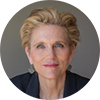Download PDF

Lynn Gordon, MD, PhD, surprised me. She’s the senior associate dean for diversity affairs (and professor of ophthalmology) at the David Geffen School of Medicine in Los Angeles, and I asked her how UCLA promotes its young women and minority academicians for advancement. She said, “We provide professional development training targeted for our junior faculty who are women and/or minorities. However, we want to be inclusive and so we invite all our faculty to participate. All our boats rise together.”
An academic career requires a palette of skills and knowledge, and most of it isn’t taught in residency or fellowship. Moreover, there’s no road map. So, how do young faculty in ophthalmology learn the craft of academic medicine?
Lama Al-Aswad, MD, MPH, at Columbia University in New York City, emphasized the importance of getting advice. “I truly excelled when I found a mentor to advise me about my career.” Our Academy president, Keith Carter, MD, agrees. Keith often references the career-changing advice he got from an early mentor who nudged him into academics. As department chair at the University of Iowa, he regularly meets with the young faculty to help them refine goals and aspirations. And at Emory, a young ophthalmologist, Purnima Patel, MD, has gone a step further, assembling a mentoring team for guidance on different aspects of her career.
Is the academic path more tortuous for female and minority faculty? Lynn suggested that—along with the opportunities available to early and mid-career women and underrepresented minorities (URMs)—some barriers do exist. These might include policies that don’t account for the (sometimes) altered career arc during childbearing years, microaggressions in the workplace, or difficulty in finding mentors.
And Keith noted that it’s often more comfortable for mentors and mentees when they have a lot in common. For instance, he has observed that women residents and medical students often seek out their women faculty for advice. Providing a variety of potential mentors is one rationale he cites for cultivating diversity among the faculty.
Many institutions have crafted formal programs to address these issues. For example, the David Geffen School of Medicine provides a year-long program for mid-career women. (While there isn’t a separate program for URMs, the school works to ensure that about 30% of the participants are from historically underrepresented groups.) Across the country at Columbia, the medical center created the Dean’s Advisory Committee for Women Faculty to address issues specific to women faculty and to address career satisfaction.
At the professional society level, the Academy has a Leadership Development Program, and ARVO has a Women’s Leadership Program. Both teach leadership skills and provide mentoring for ophthalmologists earlier in their careers, although they were not specifically designed for academicians.
Women in Ophthalmology (WIO) was founded to promote the careers of women ophthalmologists, and Ophthalmic Women Leaders (OWL) was founded to help women in ophthalmic industry, research, and clinical practice. Interestingly, OWL recently changed its name to Ophthalmic World Leaders. Georgette Pascale, the president of OWL explained, “We have always given priority to promoting the careers of women, but our new name embodies the goal of advancing diversity in leadership in all areas, and that means including and embracing everyone who makes our industry so innovative.” And Lama, the president of WIO, also sees WIO as an inclusive organization. “From the beginning, WIO had the vision to teach leadership skills to women ophthalmologists—and every year, we have men attendees who’ve heard about our great leadership training.”
In looking back, Lama wondered whether she hit roadblocks in her career “because of my gender or because I was young and inexperienced.” She advises all young ophthalmologists, regardless of sex or ethnicity, to define their career goals and to craft effective strategies for professional success. With effective guidance and leadership, all boats can rise together.